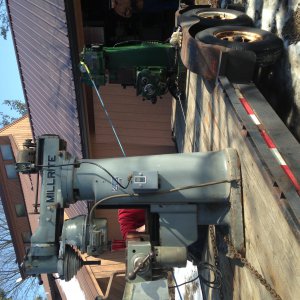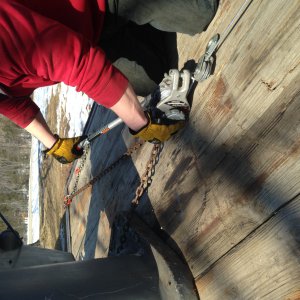- Joined
- Dec 6, 2012
- Messages
- 2,677
Last weekend we once again had the priviledge of engoying bigearls hospitality.
Three of us made the 14+hour trip to Earls home & shop in Indiana.
We were met there by Toag (Jerry), who we were able to coax into helping us.
The five of us loaded a little Millrite (#1,200), a Van Norman 22LU (#3,300), and a Lodge & Shipley 12x54 (#5,000). We left Friday morning early, loaded all day Saturday, and arrived back in MN on Sunday. Rotating drivers every several hours.
The event was not without it's challenges. Like most of us who suffer from the vacant floor space attracts machines disease, Earl is blessed with a collection of large machines. We frequently had to move a machine in order to get the machine we intended ot load to clear.
Earl topped of his excellent machines and very fair prices, with a place to take a nap, a hot breakfast and Earl burgers (one pound burgers with jalapenos and cheese).
We are all in debt to Toag who helped us think through the process of safe loading.
Daryl
MN


Three of us made the 14+hour trip to Earls home & shop in Indiana.
We were met there by Toag (Jerry), who we were able to coax into helping us.
The five of us loaded a little Millrite (#1,200), a Van Norman 22LU (#3,300), and a Lodge & Shipley 12x54 (#5,000). We left Friday morning early, loaded all day Saturday, and arrived back in MN on Sunday. Rotating drivers every several hours.
The event was not without it's challenges. Like most of us who suffer from the vacant floor space attracts machines disease, Earl is blessed with a collection of large machines. We frequently had to move a machine in order to get the machine we intended ot load to clear.
Earl topped of his excellent machines and very fair prices, with a place to take a nap, a hot breakfast and Earl burgers (one pound burgers with jalapenos and cheese).
We are all in debt to Toag who helped us think through the process of safe loading.
Daryl
MN



